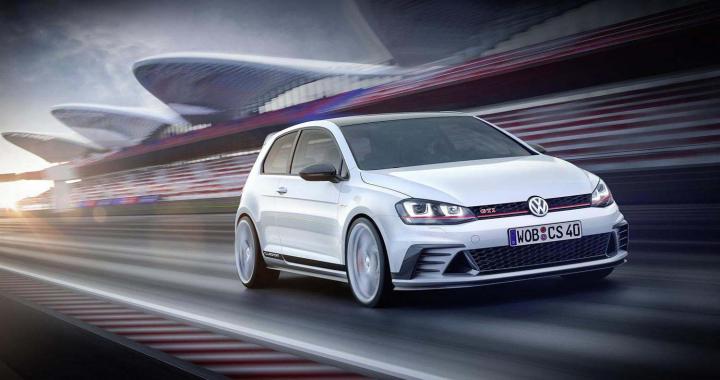
This year, Volkswagen will travel to the Wörthersee meet to present a new concept called Golf GTI Clubsport that celebrates the nameplate’s 40th birthday. Starting with a stock three-door GTI, designers have added a new concept-specific front bumper fitted with large air vents on either side, a splitter likely made out of carbon fiber and a U-shaped air dam with honeycomb inserts. Out back, the concept features a black roof-mounted spoiler and two chromed exhaust tips.
Volkswagen is keeping full technical details under wraps until the concept makes its official debut, but the automaker is whetting our appetite by saying the hot hatch packs a turbocharged 2.0-liter four-cylinder engine tuned to generate 265 horsepower. To put that figure into perspective, a bone-stock 2015 GTI makes 210 horsepower, and a GTI equipped with the optional Performance Package pumps out 220 ponies.
The concept appears to sit a little lower than a stock GTI, which likely hints that engineers have revised the suspension setup to obtain a stiffer and more responsive ride. However, take this with a grain of salt because teaser sketches can be deceiving. What’s certain is that the GTI Clubsport’s multi-spoke alloy wheels hide huge disc brakes with red calipers.
Stay tuned, Volkswagen’s next concept will be officially unveiled on May 13th. Right now, it’s too early to tell what the future holds for the Clubsport. It could be a design study created specifically for the Wörthersee show, or it could accurately preview a more potent version of Volkswagen’s iconic hot hatch that would fill the gap between the standard GTI and the all-wheel drive Golf R.





